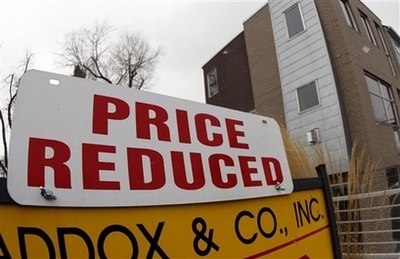Confidence plunges, inflation rate soars in US
Updated: 2008-02-27 09:45
NEW YORK -- No good news today on the economic front. Consumer confidence plunged, the wholesale inflation rate soared, the number of homes being foreclosed jumped, home prices fell sharply and a report predicts big increases in health care costs.
|
|
Consumer confidence weakened significantly as Americans worry about less-favorable business conditions and job prospects. The New York-based Conference Board says in a report released on Tuesday that its Consumer Confidence Index plunged in February to 75.0 from a revised 87.3 in January.
The reading -- the lowest since the index registered 64.8 in February 2003 -- is far below the 83.0 analysts expected.
The index measures how consumers feel now about the economy. It has been weakening since July, suggesting that wary consumers may retrench financially, which could fatigue the economy further.
Inflation at the wholesale level soared in January, pushed higher by rising costs for food, energy and medicine. The monthly increase carried the annual inflation rate to its fastest jump in a quarter century.
The Labor Department said Tuesday that wholesale prices rose 1 percent last month, more than double the 0.4 percent increase that economists had been expecting.
The January surge left wholesale prices rising by 7.5 percent over the past 12 months, the fastest pace in more than 26 years, since prices had risen at a 7.5 percent pace in the 12 months ending in October 1981.
Nationwide, some 233,001 homes received at least one notice from lenders last month related to overdue payments, compared with 148,425 a year earlier, according to Irvine, Calif.-based RealtyTrac Inc. Nearly half of the total involved first-time default notices.
The worsening situation came despite ongoing efforts by lenders to help borrowers manage their payments by modifying loan terms, working out long-term repayment plans and other actions
U.S. home prices lost 8.9 percent in the final quarter of 2007, Standard & Poor's said Tuesday, marking a full year of declining values and the steepest drop in the 20-year history of its housing index.
"We reached a somber year-end for the housing market in 2007," said one of the index's creators Robert Shiller. "Home prices across the nation and in most metro areas are significantly lower than where they were a year ago. Wherever you look things look bleak."
The S&P/Case-Shiller home price indices, which include a quarterly index, a 20-city index and a 10-city index, reflect year-over-year declines in 17 metropolitan areas with double-digit declines in eight of them.
By 2017, total health care spending will double to more than $4 trillion a year, accounting for one of every $5 the nation spends, the federal government projects.
The 6.7 percent annual increase in spending -- nearly three times the rate of inflation_ will be largely driven by higher prices and an increased demand for care, the Centers for Medicare and Medicaid Services said Monday. Other factors in the mix include a growing and aging population. The first wave of baby boomers become eligible for Medicare beginning in 2011.
With the aging population, the federal government will be picking up the tab for a growing share of the nation's medical expenses. Overall, federal and state governments accounted for about 46 percent of health expenditures in 2006. That percentage will increase to 49 percent over the next decade.
|
|
|
||
|
||
|
|
|
|






